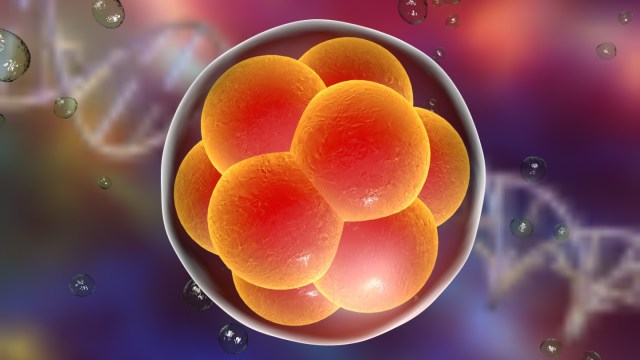Is what’s coming from under the ice going to kill us — or save us?

The permafrost in the arctic and Antarctic are warming at an unprecedented rate. Whether this will help cool the Earth or unleash even greater strife and turmoil, is a matter of debate. One thing we know for sure, the arctic is being affected by climate change at a much faster than predicted, and three times more quickly than the rest of the planet.
One of the fears is that this will release a significant amount of methane gas into the atmosphere. The bacteria in this permafrost can either release carbon dioxide or methane, depending if there’s enough oxygen around. This is the traditional concern. But now things are getting more complicated. Scientists need to find out exactly what kind of bacteria is trapped and what kind of reaction their reintroduction might make.
Bacteria can last a really long time frozen and reactivate as if nothing’s happened. Consider, in a 2005 NASA study, researchers revived a 32,000 year-old bacteria from the bottom of a frozen lake. That’s not the oldest. A 2007 study saw scientists rejuvenate a bacteria frozen for millions of years. So it’s possible that an ancient pathogen which we have no knowledge of could rise up and cause the next great epidemic.

Loss of ice in the arctic may be reviving ancient bacteria. Getty Images.
Since Neanderthals and Denisovans were known to inhabit Siberia, viruses from one of these prehistoric hominin species could enter into the biosphere and come to infect us, modern-day humans. There’s even evidence that such bacteria may be antibiotic-resistant. The reason is, they encounter fungi and other organisms in the environment who naturally create their own antibiotics. This allows the bacteria to evolve to overcome them and so their pharmaceutical equivalents.
Now, instead of from the distant past, it may be microbes from more recent history that’ll come back to plague us. Case in point, a 12 year-old boy in Siberia near the Arctic Circle caught anthrax last August. The pathogens that infected him are thought to have emanated from a dead reindeer carcass. At the beginning of the last century, there was an anthrax epidemic among reindeer in that area, who were buried in shallow heaps in the Siberian permafrost, as the soil is much too hard to dig deeply into. It’s thought that around 7,000 sites may contain such reindeer.
Another fear, Siberian smallpox victims in the 1890s were buried in shallow graves. A few of their bodies have been tested. So far, no pathogens were detected. Many other bacteria and microbes, perhaps some we aren’t familiar with or don’t have a cure for, could erupt out of the defrosting soil, as well. Despite these worrisome predictions, there may be an upside to bacteria at the poles reentering the biosphere.

Anthrax infected reindeer carcasses are defrosting in Siberia due to global warming. Getty Images.
A new study published in the journal Nature, finds that there is a certain bacteria trapped under ice which when revived, could consume a particularly impactful greenhouse gas, and thus stymie global warming. Researchers discovered a type of bacteria in a remote lake in Antarctica that feeds on methane, whose contribution to global warming is approximately 30 times greater than that of carbon dioxide. Study authors put it like this, “Aquatic habitats beneath ice masses contain active microbial ecosystems capable of cycling important greenhouse gases.”
They started out by drilling deep into Lake Whillans, a large body of water 2,600 ft. (800 m) beneath the West Antarctic Ice Sheet. The sample of bacteria they pulled out first settled there 120,000 years ago. These scientists did recover its genomic information, so perhaps we could clone it. Still, we don’t know that the bacteria could absorb all of the methane trapped in Antarctica.
The study says, “A large methane reservoir is thought to exist beneath the West Antarctic Ice Sheet, but its quantity, source and ultimate fate are poorly understood.” These bacteria were shown in a lab to trap methane in water and gobble it up. If we could sequence the genome of this particular fauna, we may possess a tool able to thwart climate change, or at least mitigate its effects.
With this particular type the author’s write, “Bacterial oxidation consumes [more than] 99 percent of the methane and represents a significant methane sink.” More research in these remote regions is needed to help put the brakes on global warming and to protect vulnerable populations from possible outbreaks.
For more on the complex relationship between bacteria and humans, click here:





